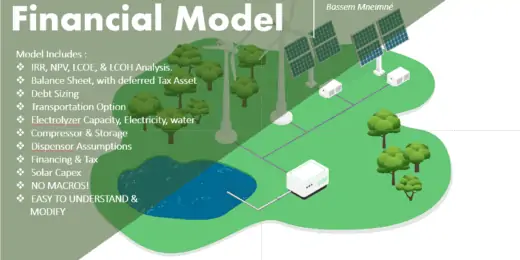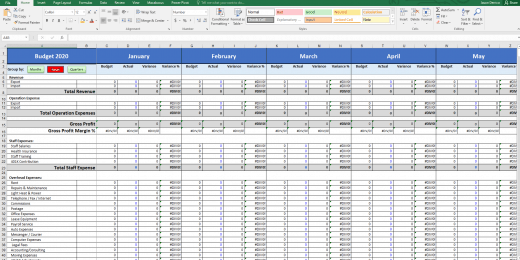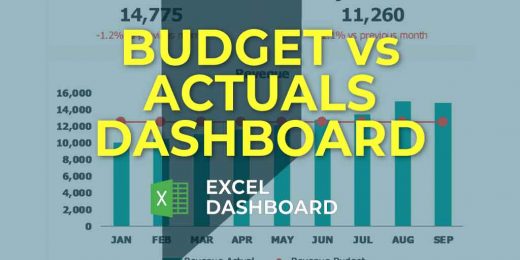Transform Your Approach With Budget to Actual Variance Analysis: Advanced Techniques

Elevate your financial strategies by mastering advanced budget to actual variance analysis techniques. Discover how these methods can optimize spending and drive business growth.
Budgeting forms the backbone of sound financial management, yet many businesses struggle to leverage their full potential. By thoroughly analyzing variances between budgeted and actual figures, companies can gain invaluable insights that inform decision-making and improve fiscal responsibility. Advanced variance analysis techniques delve deeper than basic comparisons, identifying underlying causes of discrepancies and providing a clearer roadmap for future budget planning.
Mastering these techniques is crucial for organizations seeking to enhance operational efficiency and maintain a competitive edge. Outlining the importance and benefits of sophisticated variance analysis will transform an organization’s financial health, allowing for proactive rather than reactive management.
Introduction To Budget To Actual Variance Analysis
Budget to Actual variance analysis is a powerful tool for any business. It tells us how well we stick to our budget. By comparing what we plan to spend against what we actually spend, we spot where we differ. Think of this analysis as a financial health check-up. It helps us find money leaks and cash flow hiccups early. With it, we make smart choices for a steady financial future.
The Importance Of Variance Analysis In Financial Planning
Financial planning relies on good data. Without variance analysis, plans slip off track. This analysis lets companies:
- Keep budgets in check
- Understand spending patterns
- Fix issues before they become big problems
Variance analysis turns numbers into action. It translates dry data into a clear path to save funds and boost profits.
How Variance Analysis Drives Strategic Decision-making
Decisions shape our businesses. With variance analysis, decisions get sharper. This tool shows where a business strays from its financial plan. It reveals trends and triggers that might push spending off course. This insight is crucial for strategic moves. Here’s what it does for decision-makers:
- Highlights areas needing attention
- Guides resource allocation
- Supports growth and scaling activities
In short, variance analysis is the compass guiding businesses through the financial landscape. It steers companies away from unseen risks towards opportunities for expansion and efficiency.
Setting Up For Successful Variance Analysis
Setting Up for Successful Variance Analysis begins with a solid framework. To understand how your business performs, comparing budgeted numbers to actual figures is crucial. This comparison helps you spot trends, red flags, and opportunities. A robust structure for your variance analysis can lead to insightful financial decisions. Let’s dive into building a powerful model for your analysis.
Key Components Of A Variance Analysis Model
Every effective Variance Analysis Model comprises critical elements that work together:
- Historical Data: This offers context and basis for comparison.
- Current Data: These are the actual numbers for the period.
- Budget Data: It outlines the expected performance set beforehand.
- Variance Thresholds: Decides what level of variance is significant.
- Frequency of Review: Determines how often you analyze the variances.
- Root Cause Analysis: Goes deeper into the reasons behind variances.
Combining these elements, you get deeper insights and can pinpoint where and why performance does not meet the budget.
The Role Of Budgeting In Variance Analysis
In Variance Analysis, your budget acts as a baseline. It is the yardstick by which you measure everything else. A detailed and realistic budget is key. Here are the steps in the budgeting process that aid effective variance analysis:
- Set clear goals for revenue and expenditures.
- Build the budget with input from all departments.
- Ensure the budget reflects business conditions and goals.
- Update the budget with new information throughout the year.
With these steps, your budget aligns with business strategies. This alignment is vital for meaningful variance analyses. It helps reveal the true state of performance against plans.
Identifying Variance Sources
Peeling back the layers of your company’s financial performance can uncover the nuanced stories hidden in the numbers. Variance analysis plays the detective, highlighting where and how actual outcomes differ from expectations. Effective analysis not only spots these differences but goes deeper to understand their origins. By pinpointing sources of variance, businesses can take control and refine their financial strategies.
Distinguishing Between Favorable And Unfavorable Variances
Two paths emerge in variance analysis: favorable and unfavorable. Favorable variances signal that actual revenues are higher or costs lower than planned, a clear sign of financial winds blowing in your favor. Unfavorable variances, on the other hand, ring the alarm when expenses overshoot or revenues fall short. The size and trend of these variances can drive critical business decisions.
Spotting these trends early empowers quick action. Take a closer look at the data:
- Positive variances: Indicate efficiency or increased profitability
- Negative variances: May reveal issues in pricing, costing, or operations
Common Causes Of Budget Variances
The seeds of budget variances often rest in a few common gardens. By understanding these common causes, companies can anticipate challenges and adapt plans in real time. Consider the following scenarios:
| Cause | Impact | Action Items |
|---|---|---|
| Market fluctuations | Can lead to revenue shifts | Adjust forecasts; consider hedging strategies |
| Operational inefficiencies | Drive up costs | Evaluate processes; invest in training or technology |
| Material price changes | Affect cost of goods sold | Negotiate with suppliers; source alternative materials |
Further, incorrect assumptions or an unpredictable business environment can lead to significant variances. Regular checks and balances ensure that a company can stay agile and adjust its budgeting strategy effectively.
Advanced Techniques In Variance Analysis
Businesses keen on sharpening their financial performance often turn to variance analysis. This process compares budgeted outcomes with actual results. But advanced techniques in variance analysis can transform this comparison into a power tool for strategic decision-making.
Incorporating Statistical Methods
Advanced variance analysis goes beyond simple subtraction. It utilizes statistical methods to offer deeper insights. This includes:
- Standard deviation to measure the spread of variances
- Regression analysis to understand how variables affect performance outcomes
- Z-scores to assess the probability of variances
By incorporating these methods, businesses can identify not just the ‘what’, but the ‘why’ behind the numbers.
Leveraging Technology For Enhanced Analysis
To stay ahead, companies can leverage technology. Software tools automate and refine the variance analysis process. Key benefits include:
- Real-time data analysis
- Interactive reporting dashboards
- Integrated forecasting
With these technological advancements, variance analysis becomes more accurate and responsive to market changes.
Applying these advanced techniques equips leaders with critical fiscal intelligence. Smarter decisions lead to stronger financial control and better business outcomes.
Analyzing Variances For Revenue Streams
Budget to actual variance analysis transforms business strategies. It shines a light on financial performance. Every company has different revenue streams. These need close monitoring. Here, we delve into advanced techniques to analyze variances for these streams. Understanding these can help businesses adapt and grow.
Assessing Sales Volume Impact
Sales volume impact is crucial for revenue analysis. It tells us how sold quantities affect budgets. Here’s how to assess this:
- Compare planned and actual sold units.
- Note the differences.
- Analyze the impact on revenue.
| Product | Planned Units | Actual Units | Variance |
|---|---|---|---|
| Product A | 1000 | 750 | -250 |
| Product B | 1500 | 1500 | 0 |
Look for patterns in the variances. Identify what drives changes.
Understanding Price And Mix Variances
Prices and product mix shape revenues too. Price variances occur when actual prices differ from expected. Mix variances happen when sales proportions change.
- Check if prices were higher or lower than planned.
- Calculate the price variance for each product.
- Examine the product mix sold.
Use this data to make better pricing decisions. Adjust your product mix to match demand.
Take control of your revenue streams. Use variance analysis to stay ahead. Understand the factors that lead to variance. Make informed decisions to drive profitability.
Drilling Down Into Expense Variance Factors
Unlock the mysteries behind your company’s financial performance with a deep dive into expense variance factors.
Fixed Versus Variable Costs Considerations
To truly grasp the essence of your budget to actual variance, distinguish between fixed and variable costs. Fixed costs stay constant regardless of production levels, such as rent or salaries. On the other hand, variable costs fluctuate with business activity, like raw materials or commission payments.
- Analyze each category separately for sharper insights.
- Pinpoint changes in variable costs tied to production shifts or sales volumes.
- Review fixed expenses for unexpected billing increases or savings.
Impact Of Operational Efficiency On Expenses
Operational efficiency can make or break financial expectations. Scrutinize how well your business turns resources into output. Here’s how:
- Inspect process streamlining or automation, which can lead to savings.
- Consider the expenses involved in maintaining equipment and technology.
- Assess staffing levels against workload to identify potential overstaffing or the need for additional personnel.
By closely examining these elements, you can pinpoint areas where improving efficiency will optimize expenses.
Case Studies: Real-world Applications
Embracing the power of variance analysis transforms businesses. Learning from real-world applications offers invaluable insight. Here’s a look at how different industries leverage budget to actual variance analysis to drive success.
Industry-specific Variance Analysis Examples
Each industry faces unique budgetary challenges. Advanced variance analysis tailors solutions for these challenges.
| Industry | Challenge | Solution |
|---|---|---|
| Manufacturing | Material cost fluctuations | Detailed variance reporting |
| Healthcare | Regulatory compliance costs | Regular budget reviews |
| Retail | Seasonal inventory changes | Forecasting and adjustment strategies |
Lessons Learned From Successful Variance Management
Companies excel in variance management have shared valuable lessons. These strategies ensure agility and accuracy in financial planning.
- Embrace technology: Use advanced software for real-time analysis.
- Train teams: Ensure understanding of variance implications.
- Implement a process: Standardize how variances are addressed.
- Review regularly: Schedule consistent variance analysis sessions.
- Adapt promptly: Make immediate adjustments based on findings.
Taking Action Based On Variance Insights
Understanding variance insights can spark transformative changes in how you manage budgets. It is not just about noting differences but taking decisive steps towards financial efficiency. Let’s dive into the advanced techniques that allow you to proactively respond and align your financial strategies with actual business outcomes.
Developing Effective Remedial Measures
Identify the Root Causes:
- Detect which budget areas differ from the plan.
- Analyze why these discrepancies have arisen.
Create an Action Plan:
- Set clear, achievable goals to address variances.
- Choose strategies that fit your business’s needs.
Monitor and Adjust:
Ongoing review ensures your plan stays on track. React swiftly to any new variances to keep your budget aligned with company goals.
How To Communicate Variances And Actions To Stakeholders
| Stakeholder | Information Needed | Communication Method |
|---|---|---|
| Executives | Impact on financial goals | Formal report |
| Team Managers | Detailed variance causes | Meetings |
| Investors | Overall performance | Email updates |
Be Clear and Concise: Use simple language when explaining variances. Graphs and charts can help visualize the data. This leads to better understanding and support.
Remember, effective communication promotes transparency, builds trust, and sets the stage for collective action.
Future-proofing Your Financial Plans
Smart finance teams know the importance preparing for the future. Techniques in budget to actual variance analysis can now shield your plans from unpredictability. Let’s dive into how you can transform your approach and ensure you’re ahead of the game.
Continuous Improvement In Variance Analysis Processes
With dynamic financial landscapes, upgrading your processes is key. Regularly reviewing variance analysis strengthens financial foresight. It’s not just a one-time event; it’s a habit.
- Identify trends and patterns.
- Refine forecasting methods with new data.
- Share insights across departments for better decision-making.
To make these improvements:
- Use the latest software that aligns with your goals.
- Run regular training for teams to stay sharp.
- Automate where possible to save time and reduce errors.
Track these changes to see their impact over time. Adjust as needed to keep your financial plans resilient.
Embracing Predictive Analytics For Proactive Management
Predictive analytics turns data into a crystal ball. It gives you the power to anticipate outcomes and take action early.
| Step | Action | Benefit |
|---|---|---|
| 1 | Integrate historical data | Build a solid data foundation |
| 2 | Apply statistical analysis | Spot future trends |
| 3 | Implement machine learning | Forecast with higher accuracy |
Consider predictive analytics software that fits your company’s size and complexity. Small investments today can lead to significant savings tomorrow. The key is to stay proactive, not reactive. Future-proof your financial strategy by leveraging advance warning systems. Make smart decisions before your financial ship hits stormy seas.
Frequently Asked Questions
How Do You Do A Budget Variance Analysis?
Begin by comparing actual financial results to budgeted figures. Identify variances, analyze reasons for the differences, and evaluate their impact on business operations. Implement strategies for improved control and future budget accuracy.
How Do You Explain Variance Between Budget And Actual?
Variance between budget and actual reflects the difference in planned versus real financial performance. This occurs due to unanticipated events, errors in estimation, or changes in market conditions. Identifying and analyzing these variances helps improve future budgeting accuracy.
What Is The Best Way To Deal With This Budget Variance?
Identify the root cause of the variance. Adjust your budget forecast and spending accordingly. Communicate with stakeholders about the changes. Implement corrective actions promptly. Monitor the budget closely to prevent future variances.
What Is Variance Analysis In Advanced Cost Accounting?
Variance analysis in advanced cost accounting investigates the differences between actual costs and budgeted or standard costs. It identifies reasons for variances to control expenses and improve financial performance.
Conclusion
Embracing advanced techniques in budget-to-actual variance analysis can redefine your financial strategy. This shift ensures precise budget management, fostering informed decision-making and financial health. By adopting these methodologies, your organization is set to achieve superior fiscal accuracy and enduring success.
Unlock the full potential of your financial insights now.



















































